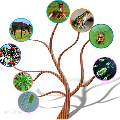A thorough and systematic understanding of different elements of cyberattacks is essential for developing the necessary tools to prevent, detect, diagnose, and mitigate cyberattacks in manufacturing systems. In response, researchers have proposed several attack taxonomies as methods for recognizing and categorizing various cyberattack attributes. However, those taxonomies cover selected attack attributes depending on the research focus, sometimes accompanied by inconsistent naming and definitions. These seemingly different taxonomies often overlap and can complement each other to create a comprehensive knowledge base of cyberattack attributes that is currently missing in the literature. Additionally, there is a missing link from creating structured knowledge by using a taxonomy to applying this structure for cybersecurity tools development and aiding practitioners in using it. To tackle these challenges, this article highlights how cyberattack taxonomies can be used to better understand and characterize manufacturing cybersecurity threats. It also reviews and analyzes current taxonomical classifications of manufacturing cybersecurity threat attributes and countermeasures, as well as the proliferation of the scope and coverage in existing taxonomies. As a result, these taxonomies are compiled into a more comprehensive and consistent meta-taxonomy for the smart manufacturing space. The resulting meta-taxonomy provides a holistic analysis of current taxonomies and integrates them into a unified structure. Based on this structure, this paper identifies gaps in current attack taxonomies and provides directions for future improvements. Finally, the paper introduces potential use cases for attack taxonomies in smart manufacturing systems for assessing security threats and their associated risks, devising risk mitigation strategies, and informing the application of cybersecurity frameworks.
翻译:彻底和系统地理解网络攻击的不同要素,对于开发必要的工具,预防、检测、诊断和减轻制造系统中的网络攻击攻击,至关重要。对此,研究人员提出了几种攻击分类,作为识别和分类各种网络攻击属性的方法;然而,这些分类根据研究重点,有时还伴有不一致的命名和定义,涵盖选定的攻击属性;这些似乎不同的分类往往相互重叠,可以相互补充,以建立目前文献中缺失的网络攻击属性的全面知识库。此外,从利用分类学来创造结构化知识,将这一结构用于网络攻击工具的开发并协助从业者使用这一结构。为应对这些挑战,本文章着重说明了如何利用网络攻击分类来更好地理解和定性网络攻击威胁;还审查和分析目前对制造网络威胁属性和应对措施的分类分类,以及现有分类体系的范围和覆盖面的扩散。因此,这些分类学被汇编成一个更加全面和一致的元化知识库,用于智能制造空间的网络安全工具开发,并协助从业者使用这些系统。 由此得出的元税分类学分析为当前攻击定义的系统提供了一种整体分析,为当前攻击的系统提供当前税收结构的改进的系统。





